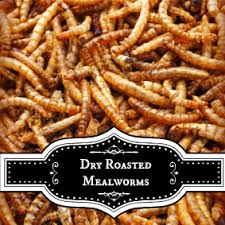Don’t Let Your Nest Egg Become an Ostrich Egg: How a Portfolio Management Pro Can Hatch Major Growth
By admin on November 1, 2013
Imagine this: you’ve diligently saved for years, building a nest egg for your future. But as you watch the financial news, a nagging worry sets in. The market seems like a rollercoaster, and you’re unsure if your investments are on the right track. Fear not! This is where a Portfolio Management Services in India (PMS) swoops in, acting as your financial guardian angel, ready to help your hard-earned money reach its full potential.
Statistics paint a compelling picture. A 2023 study by the National Endowment for Financial Education (NEFE) found that individuals who receive professional investment advice outperform those who go it alone by an average of 3% annually [Source: NEFE]. That may seem like a small difference, but over time, it can compound significantly. Let’s say you invest $100,000 with a 7% annual return (the historical average for the S&P 500) for 20 years. With professional guidance achieving an additional 3% return, your nest egg could balloon to over $460,000 compared to $348,000 without [Source: Investor.gov]. That’s a difference of over $110,000 – enough for a comfortable retirement or a dream vacation!
So, what makes a portfolio management service so effective? Here’s the secret sauce:
Expert Navigation: Financial markets are intricate ecosystems. Seasoned portfolio managers, armed with deep research and market analysis, can identify undervalued assets and promising opportunities you might miss.
Tailor-Made Strategies: Unlike a one-size-fits-all approach, PMS consider your unique financial goals, risk tolerance, and investment horizon. This translates to a personalized portfolio that works for you, not a generic template.
Active Management: A good PMS goes beyond simply buying and holding. They actively manage your portfolio, rebalancing it regularly to maintain your desired asset allocation and mitigate risk.
Time is Money: Constantly monitoring and adjusting your investments can be a daunting task. A PMS frees you from this burden, allowing you to focus on other priorities while your money grows.
The Takeaway:
Investing for the future requires more than just wishful thinking. Partnering with a skilled portfolio management service provides the expertise, customization, and time-saving benefits crucial for maximizing your financial potential. Remember, your financial well-being deserves the best care. So, are you ready to crack open the true growth potential of your nest egg?

 that about 12 percent of spices brought to the United States are contaminated with insect parts, whole insects, rodent hairs and other things, based upon an analysis of spice imports.
that about 12 percent of spices brought to the United States are contaminated with insect parts, whole insects, rodent hairs and other things, based upon an analysis of spice imports. targeted by plaintiff lawyers. One prominent defense firm is urging its clients to be prepared by assembling a litigation response team to develop a "thorough traceback program through which food items can be traced back to their origins". This firm cautions that defending these cases is not for amateurs, but requires the "coordination of expedited investigation and documentation, evidence location and preservation, supplier agreements and indemnification commitments, selection of and consultation with (often) a constellation of experts…."
targeted by plaintiff lawyers. One prominent defense firm is urging its clients to be prepared by assembling a litigation response team to develop a "thorough traceback program through which food items can be traced back to their origins". This firm cautions that defending these cases is not for amateurs, but requires the "coordination of expedited investigation and documentation, evidence location and preservation, supplier agreements and indemnification commitments, selection of and consultation with (often) a constellation of experts…."